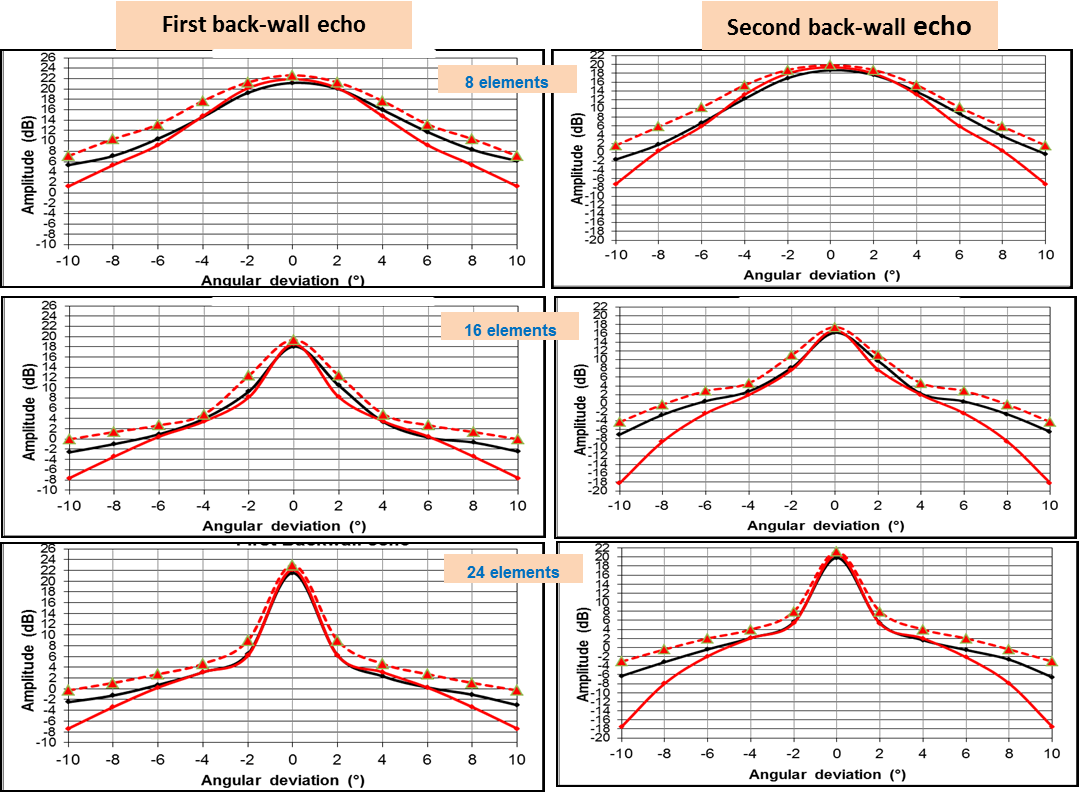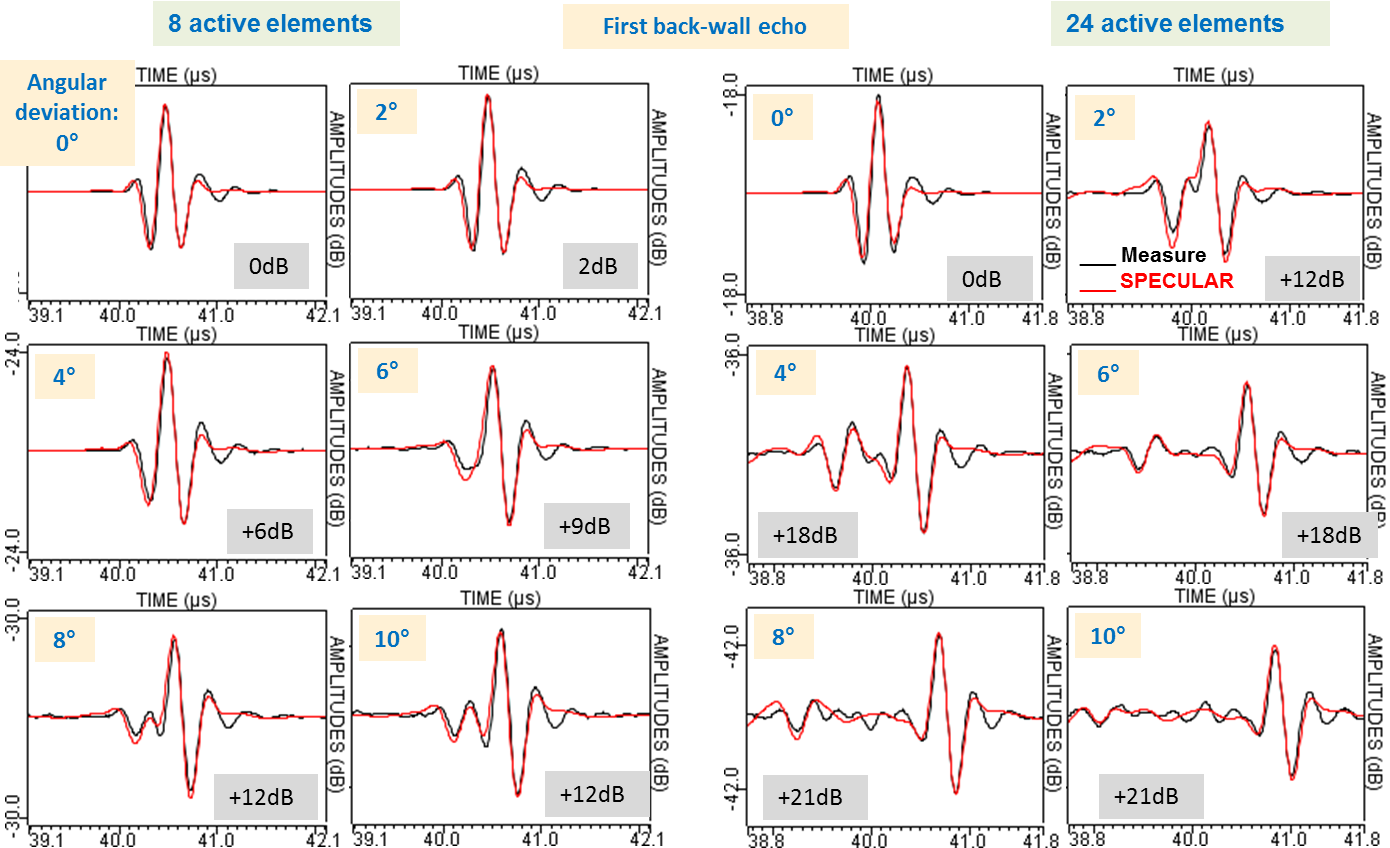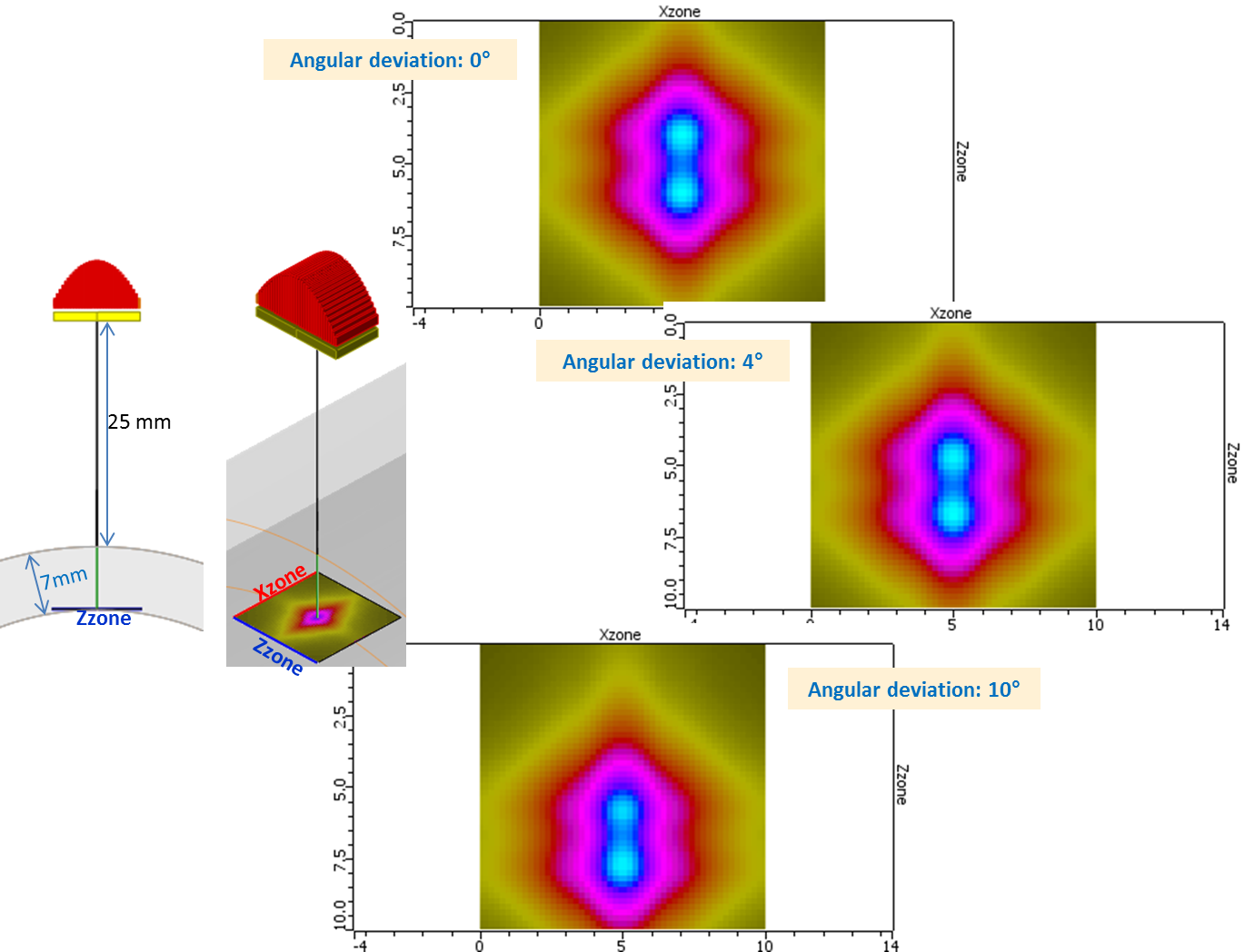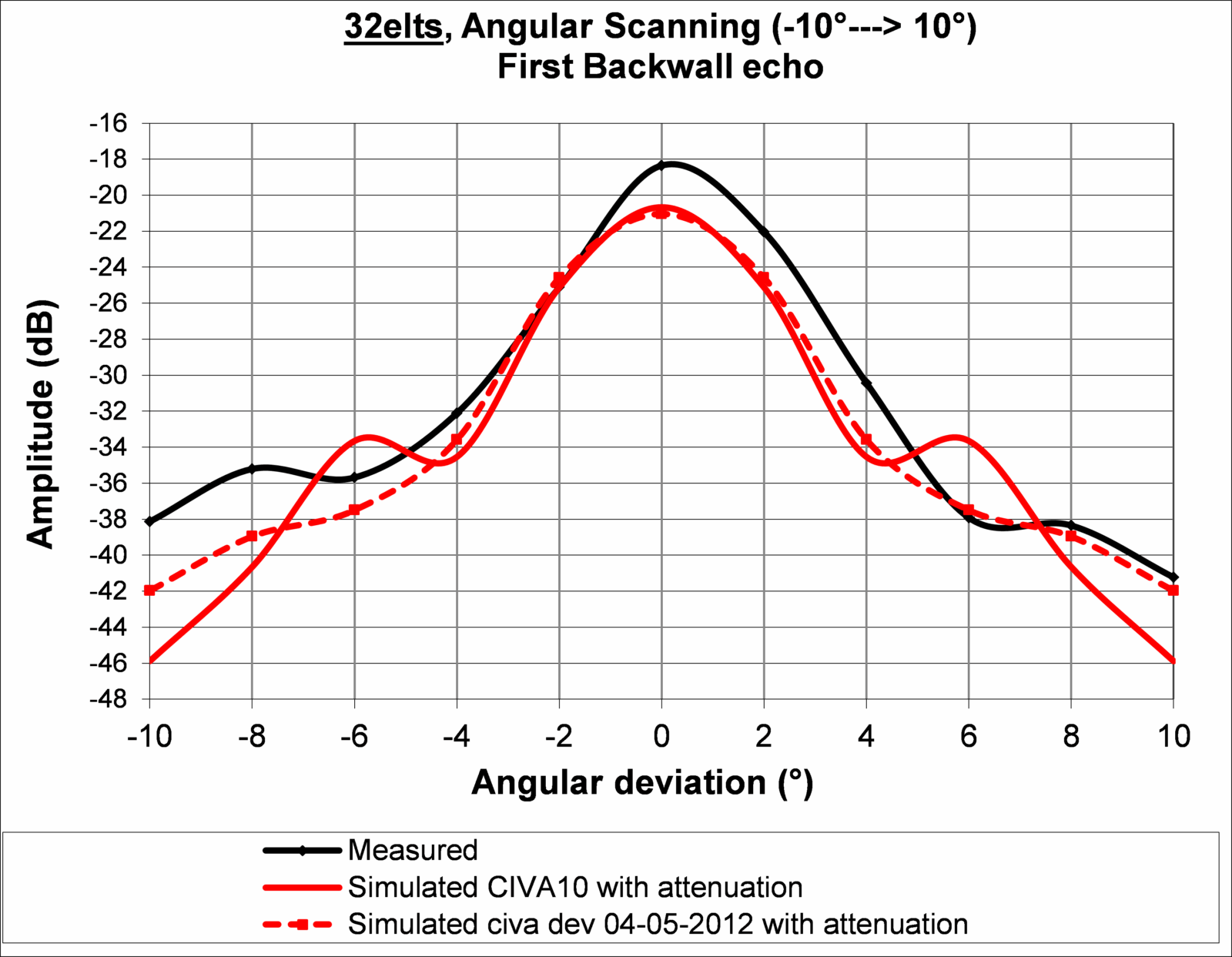UT – Backwall Echoes – Beam steering laws, -10° to 10°
Linear array, 64 elements, 3 MHz, L0°
| Ø Crystal (mm) | Mode | Frequency (MHz) | Bandwith (%) | Phase (°) |
|---|---|---|---|---|
| Linear (64 elts) | L0° | 3 | 90 | 310 |
The surface echo of a rectangular block is computed with the 64 element linear array probe positioned parallel to the specimen surface. A beam steering from -10° to 10° by 2 mm steps is applied for three active elements sequences, 8, 16 and 24 elements, and a 25 mm water path.
Results are calibrated from a Ø6 mm FBH, located at 150 mm depth and with a null delay law. The first and second backwall echoe amplitudes are plotted here below in black for experimental measurements, in red for Kirchhoff model results and in red dotted for specular model results.
The specular model predicts results in very good agreement with measurements, but constantly overestimating by 2 dB the experimental results. The Kirchhoff model provides very good results for beam steering included between -6° and 6° and diverges for greater deflections reaching 12 dB discrepancies.
Ascans obtained with specular model and measurements are compared here below.
Temporal forms of measured and specular simulated backwall echoes are similar.
Linear array, 32 elements, 10 MHz, L0°
| Ø Crystal (mm) | Mode | Frequency (MHz) | Bandwith (%) | Phase (°) |
|---|---|---|---|---|
| Linear (32 elts) | L0° | 10 | 55 | 290 |
The specimen is a a tube with a 76 mm external diameter and 7 mm thickness. The backwall echo has been measured for beam steering laws from -10° to 10°, for 25 mm water path and 32 active elements. Radiated field examples are presented here below:
Results are calibrated on a surface echo with a 0° angular deflection. First backwall echo amplitudes are plotted here below in black for experimental measurements, in red for Kirchhoff model results and in red dotted for specular model results.
Both CIVA model predictions are in good agreement with measurements for beam steering from 0° to +/- 4°. Above 4°, specular model results are better than Kirchhoff model results.
Continue to Focal laws, L0°
Back to backwall echoes
Back to geometrical echoes




